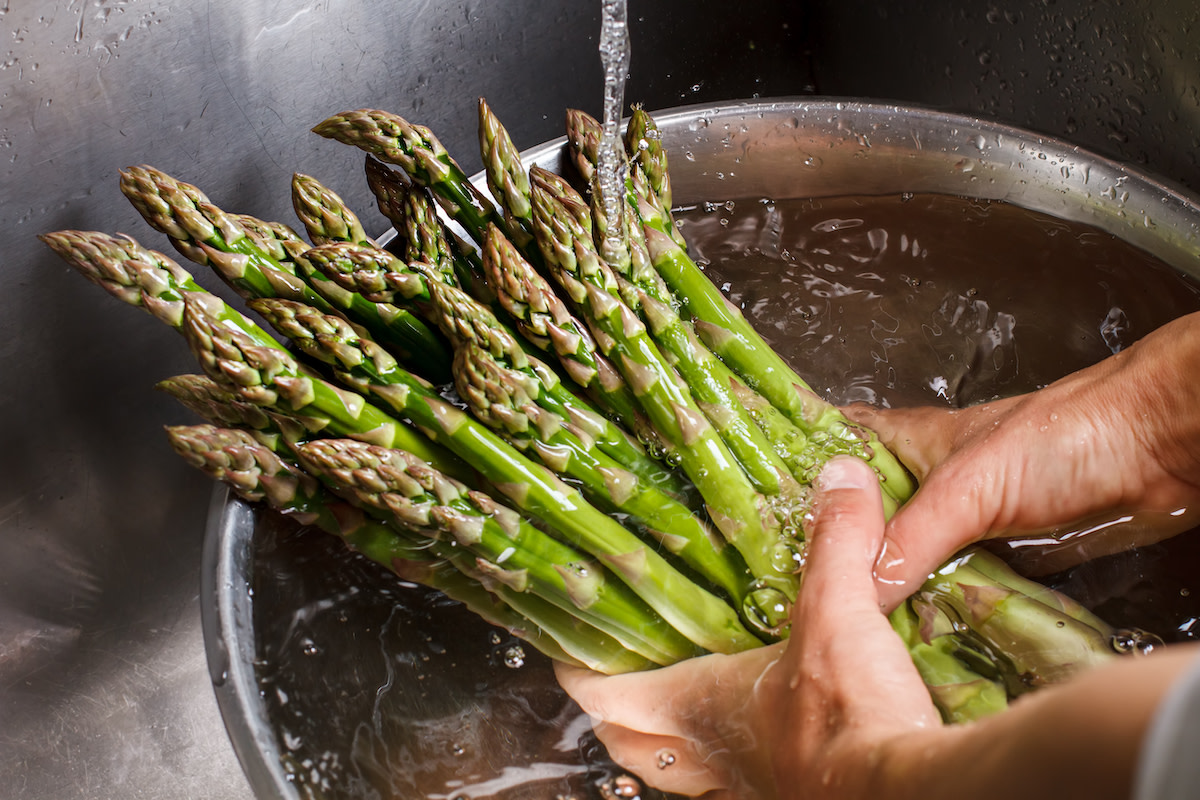How to Blanch Asparagus: Step-by-Step Blanching Guide
Written by MasterClass
Last updated: Nov 17, 2021 • 3 min read
Blanching asparagus is a great way to preserve its bright green color and tender yet crisp texture. Once it's blanched, you can flash-freeze pieces of asparagus for later or use it right away in salads or crudités.
Learn From the Best
What Is Blanching?
Blanching asparagus or other vegetables involves cooking them quickly in generously salted water to draw out their vibrant flavors and colors. The dull color you often see in raw green veggies occurs because of the gas layer between the pigment and the skin. Blanching releases that gas, allowing the pigment to reach the surface of the vegetable.
How to Prepare Fresh Asparagus for Blanching
Contrary to popular belief, there’s no need to use a peeler on the outer layers of asparagus before blanching or cooking. Look for slender, medium spears; reserve thicker spears with woody stalks for roasted asparagus or grilling, where their texture won’t become overly watery.
- 1. Clean the asparagus. First, trim away any slimy tips, and discard any especially limp stalks.
- 2. Trim away the fibrous ends. Asparagus has a natural breaking point about two-thirds down its stalk. Snap one or two by hand to find it, then measure the rest of the bunch against the test stalks and use a sharp knife to trim.
- 3. Portion into bundles. This step is optional, but you can bundle and tie six to seven asparagus stalks (depending on the size) together with a bit of cooking twine; asparagus tips are fragile, and bundling helps protect them from damage during blanching.
How to Blanch Asparagus
When blanching, your asparagus can go from bright to dull and overcooked very quickly, so the challenge is to cook the vegetables without losing color. These important steps will help you get it right:
- 1. Boil water: Fill a large pot with water to within a few inches of the top. Use a generous amount so that the water retains its heat when you add the vegetables. Bring the water to a boil over high heat.
- 2. Add salt: Add salt to the pot of boiling water—about a cup per gallon of water—and take a minute to let it return to a boil. Make sure you add enough salt to the water—your water should taste as salty as seawater.
- 3. Add asparagus bundles: Place the asparagus bundles in boiling water. Add only the amount of asparagus bundles to maintain the rapid boil. The blanching process may require several batches.
- 4. Check for doneness: After about two and a half minutes (the blanching time will vary depending on the thickness of the spears), use the tip of a paring knife to check for doneness. If necessary, continue cooking until tender. The spears should be bright green and crisp-tender.
- 5. Prepare ice bath: If you are working with the asparagus further—like grilling or preparing a sauce for the veggies—prepare a large bowl filled with cold water and ice.
- 6. Shock in ice bath: Shocking the blanched asparagus in an ice bath will stop the cooking process and cool the veggies enough for you to handle them safely. Use a pair of tongs to transfer the asparagus to the bowl of ice water for thirty seconds to one minute. Once the veggies cool, use a colander to drain.
- 7. Serve: If serving immediately, simply cut away the twine and arrange the blanched asparagus spears on a platter. Garnish as desired, with a simple drizzle of good olive oil, lemon zest, grated Parmesan, and flaky salt, or a buttery herb sauce.
How to Freeze Asparagus
To freeze asparagus for future stir-fries, soups, casseroles, and pastas, slice the stalks into bite-sized pieces or coins after blanching. Flash freeze the asparagus in a single layer on a parchment paper-lined baking sheet, which helps the veggies set as individual pieces rather than form a giant block during the freezing process. Once frozen, transfer the asparagus to a freezer bag or airtight container for longer storage.
Mise En Place
To perfect the mother sauces and make French cuisine at home, you must master essential cooking techniques. Discover Chef Thomas Keller’s approach to setting up a home kitchen and sourcing quality ingredients like fish and clams when you sign up for the MasterClass Annual Membership.
